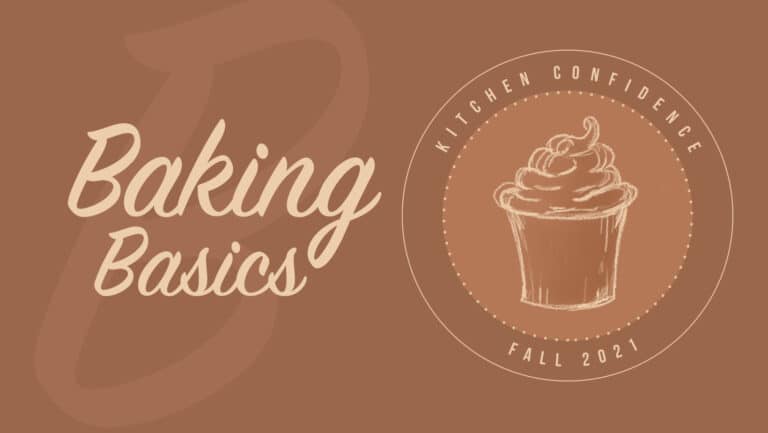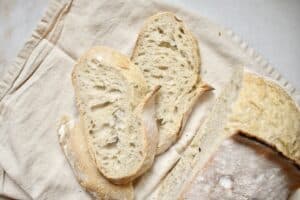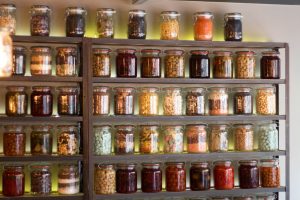If you are new to baking, there are many baking terms that you will come across in recipes that may seem unfamiliar at first. Today we are going to define some of them to help give you the confidence you need to tackle those recipes!
Terms
Batter – a mixture consisting chiefly of flour, egg, and milk or water and being thin enough to pour or drop from a spoon
Buttercream – a sweet butter-based mixture used especially as a filling or frosting
Dairy – milk from a cow or other domestic animal; also: food made primarily of or from milk
Dry Ingredients – the dry ingredients in a particular recipe – mainly flour, sugar, dry seasonings, & leavening agents
Flours:
- All-Purpose Flour – flour made from a blend of hard or soft wheats suitable for all cookery except the finest cakes
- Bread Flour – a flour from which bread dough with a good quality of gluten can be made
- Cake Flour – flour ground from soft wheat to a highly refined texture
- Gluten Free Flour – flour made from a non-gluten product. Examples: rice flour, almond flour, sorghum flour, amaranth flour, oat flour. Gluten free flour often needs to be mixed with a binder, Xanthan gum, to add elasticity.
- Self-Rising Flour – a commercially prepared mixture of flour, salt, and a leavening agent
Ganache – a sweet creamy chocolate mixture used especially as a filling or frosting
Gluten – a tenacious elastic protein substance especially of wheat flour that gives cohesiveness to dough
Egg Wash – a mixture of egg and water that is brushed on top of bread or pastry for a shiny finish
Leaven – a substance (such as yeast) used to produce fermentation in dough or a liquid; a material (such as baking powder) used to produce a gas that lightens dough or batter
Preheat – to heat an oven to a designated temperature before using for cooking
Shortening – an edible fat used to shorten baked goods
Softened Butter – butter warmed to nearly room temperature in preparation for mixing
Sugars:
- Brown Sugar – soft sugar whose crystals are covered by a film of refined dark syrup
- Confectioners’ Sugar – aka Powdered Sugar – a refined finely powdered sugar
- Granulated Sugar – a pure sugar that has been crystallized and centrifuged and then sent through a granulator where the crystals are dried, separated, and screened
- Raw Sugar – the product of sugar manufacture before refining that consists of pale yellow to brown sugar crystals covered with a film of syrup
Well – a hole made in dry ingredients in which you pour liquid
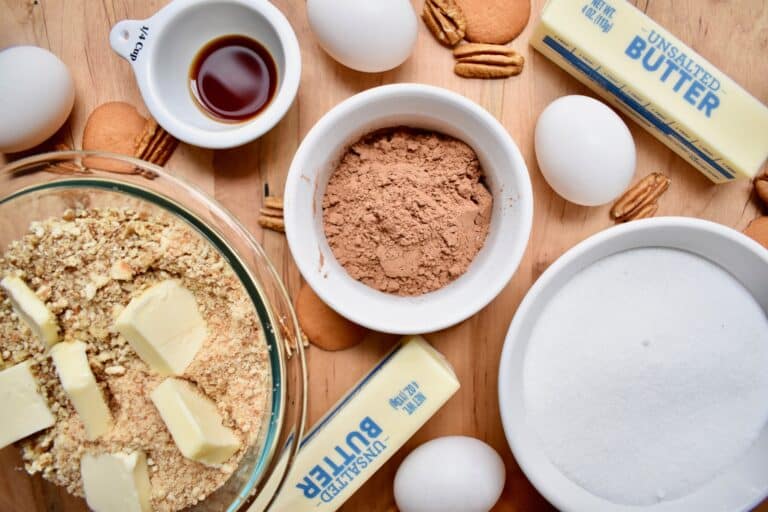
Techniques
Bake – to cook by dry heat especially in an oven
Beat – to mix by stirring
Beating Egg Whites:
- Soft Peaks – Peaks are beginning to hold their shape, but melt back into each other quickly
- Firm Peaks – Peaks hold their shape, but bend or fold over
- Stiff Peaks – Peaks hold a defined shape without bending or moving
Blend – to combine into an integrated whole
Blind Baking – to bake a pastry or pie shell before adding a filling
Chill – to make cool especially without freezing
Combine – to mix ingredients together
Cream – to beat until smooth, soft and fluffy
Crumb Coat/Dirty Ice – the first, thin layer of frosting on a cake to seal in any crumbs
Flour – To coat greased pans or dishes with a fine coat of flour. Shake out extra flour
Fold – to incorporate into a mixture by repeated gentle overturnings without stirring or beating
Grease – to spread the bottom and/or sides of a pan with shortening to prevent sticking
Incorporate – to blend or combine thoroughly
Knead – to fold, turn, and press dough with heel of your hand in order to develop the gluten and make dough more elastic
Proof – to activate yeast by mixing with water and sometimes sugar or milk
Roll – flatten and spread with a rolling pin
Scald – to heat milk just below a boiling point; tiny bubbles will form around the edge
Sift – to put through a sieve
Whisk – to mix or fluff up by beating with a whisk
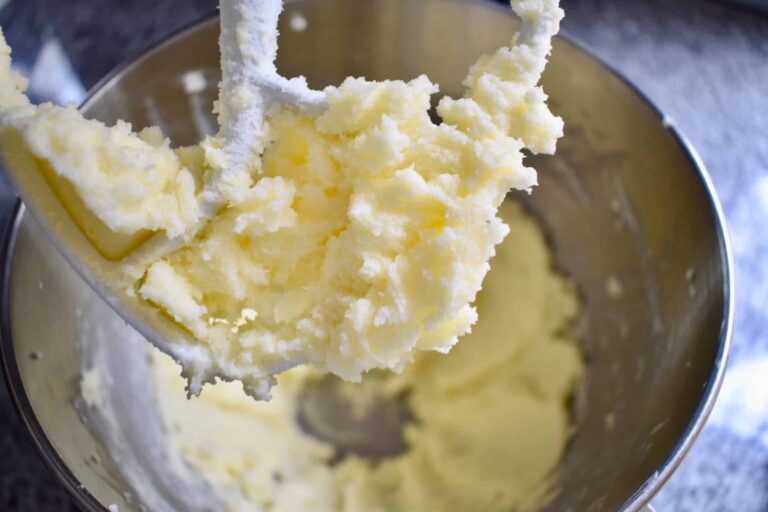
Tools
You don’t need every baking gadget out there to start baking, but a few are particularly helpful. Here is a list of my top 10 items to get you started on your baking adventures:
- Liquid measuring cups
- Dry measuring cups
- Rubber spatula/scraper (for scraping the side of the mixing bowl)
- Whisk
- Baking pans
- Oven mitts
- Parchment paper
- Wire cooling rack
- Firm spatula (for lifting and moving cookies or other baked items)
- Mixer (You don’t have to have a mixer, but once you do, you’ll never look back!)
The next two on my list would likely be a kitchen scale and oven thermometer. But, remember, you don’t need everything! Start with whatever you have now and enjoy the process!
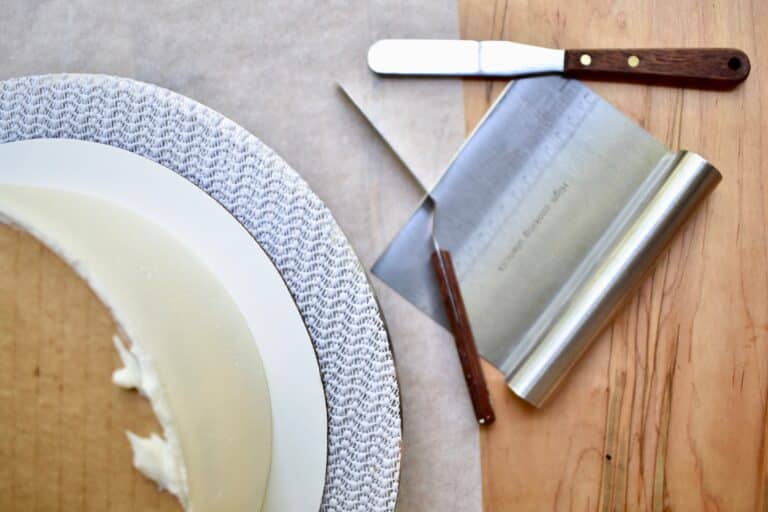
Tips
There are about 101 baking tips that would probably be helpful, but I’ve narrowed down my top 5 baking tips for you! These are general tips that apply to all forms of baking and will help you start in a solid place whether you aspire to make the most beautiful and delicate cakes or the most savory breads.
- Read through the entire recipe before getting started! Some recipes move very fast and you need to have all ingredients prepped and tools ready to use.
- Unless the recipe states otherwise, always start with room temperature ingredients.
- Measure each ingredient carefully and correctly. Remember, baking is a science and amounts do make a huge difference.
- Always preheat the oven and resist the urge to open it while baking!
- Enjoy the process of baking and share the final result with those you love!
*Most definitions taken from Miriam-Webster Dictionary or Bake Info
Join us this month for more baking basics! Whether you’re a novice or a well-seasoned baker, we’re sharing tips and tricks to help everyone gain Kitchen Confidence!
